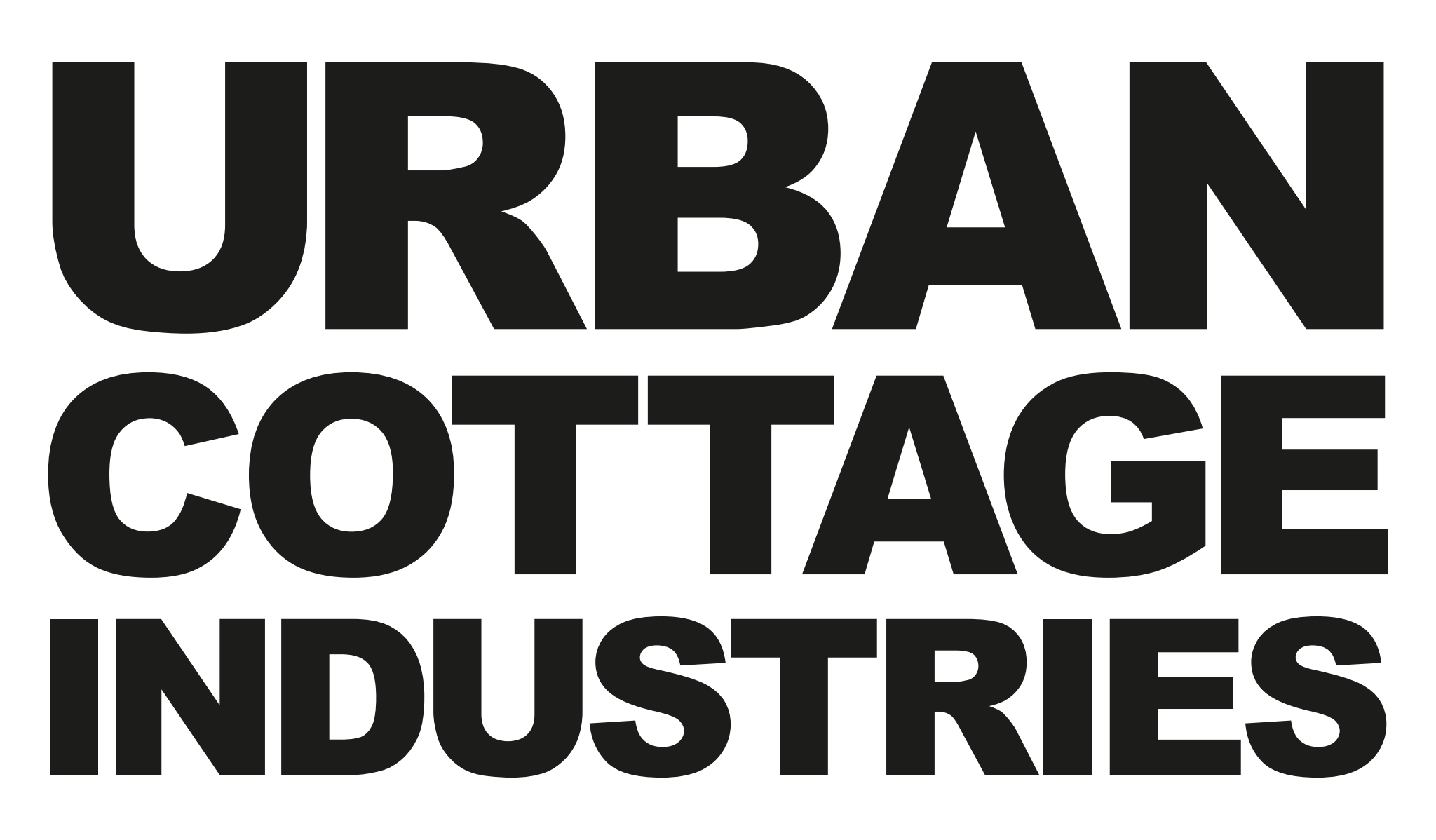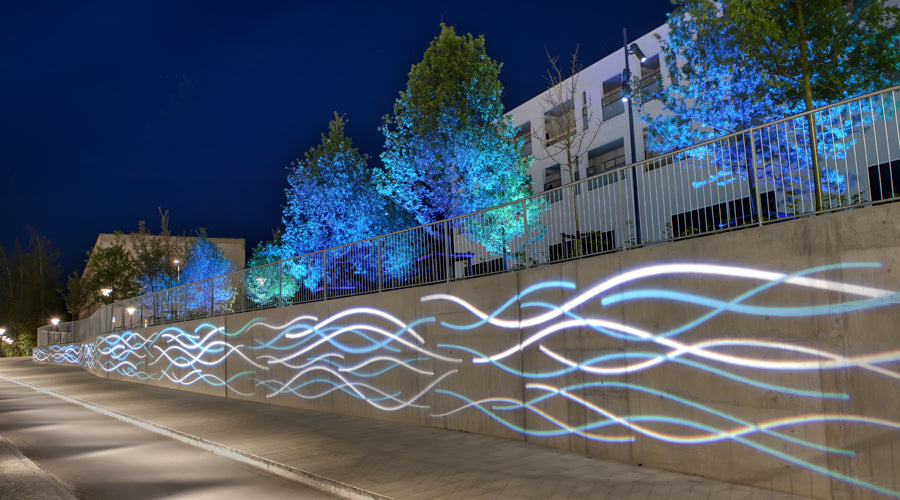Twisted lighting cable – two and three-core – from Factorylux and other manufacturers is widely available throughout the UK from a range of online and instore retailers. Although there's an applicable harmonised British and European (BS EN) standard which covers the PVC insulated cable, there seems to be a discrepancy with the BS EN standard that covers wired light fittings. Here's the explanation.
 Factorylux round lighting cable showing the stranded copper conductors, colour coded PVC insulation around each conductor and PVC outer sheath.
The metal cores in lighting cable are called conductors and cables commonly have two (live and neutral) or three (live, neutral and earth) conductive cores. The conductors are usually formed from a bundle of strands of copper wire and each core has an insulating layer usually made of PVC or rubber. The insulation is colour coded: brown for live, blue for neutral and green/yellow for earth. Round cable has a further insulating layer or sheath which holds all the cores together, but twisted cable doesn't.
The BS EN standard which covers domestic lighting cable is BS EN 50525. The requirements of the standard depend on the type of cable and each cable type has its own code. Different cables have different specifications in terms of the cross-sectional area of the conductor, and the thickness and resistivity of the insulation. The woven fabric cover on fabric cable, whether twisted or round, does not increase the insulation or resistivity. It's not relevant to the standard, except in so far as it must not prevent the cable from meeting the requirements of the standard in terms of physical and thermal performance.
Factorylux round lighting cable has the code H03VV-F, where 'H' indicates the harmonised standard; '03' is the voltage rating up to 300V; 'V' indicates the first insulation layer around the core is ordinary PVC; the second 'V' is the sheath around all the cores, again ordinary PVC; and 'F' indicates the conductors are flexible as opposed to a solid core.
Factorylux round lighting cable showing the stranded copper conductors, colour coded PVC insulation around each conductor and PVC outer sheath.
The metal cores in lighting cable are called conductors and cables commonly have two (live and neutral) or three (live, neutral and earth) conductive cores. The conductors are usually formed from a bundle of strands of copper wire and each core has an insulating layer usually made of PVC or rubber. The insulation is colour coded: brown for live, blue for neutral and green/yellow for earth. Round cable has a further insulating layer or sheath which holds all the cores together, but twisted cable doesn't.
The BS EN standard which covers domestic lighting cable is BS EN 50525. The requirements of the standard depend on the type of cable and each cable type has its own code. Different cables have different specifications in terms of the cross-sectional area of the conductor, and the thickness and resistivity of the insulation. The woven fabric cover on fabric cable, whether twisted or round, does not increase the insulation or resistivity. It's not relevant to the standard, except in so far as it must not prevent the cable from meeting the requirements of the standard in terms of physical and thermal performance.
Factorylux round lighting cable has the code H03VV-F, where 'H' indicates the harmonised standard; '03' is the voltage rating up to 300V; 'V' indicates the first insulation layer around the core is ordinary PVC; the second 'V' is the sheath around all the cores, again ordinary PVC; and 'F' indicates the conductors are flexible as opposed to a solid core.
 Standard twisted lighting cable showing the stranded copper conductors and colour coded PVC insulation around each conductor. There is no outer PVC sheath.
The relevant standard for light fittings - wall, floor and ceiling lights etc - is BS EN 60598. Light fittings are classified in various ways (for example fixed and adjustable) and the requirements of the standard depend on the classification. Two very common classifications are class I and class II, depending on the protection against electric shock. Class I light fittings are not 'double insulated' and require earthing. Class II light fittings have 'double insulation' or 'reinforced insulation' so don't require earthing.
All light fittings require an electricity supply and para 5.2.2 of BS EN 60598 sets out a minimum standard for supply cords by reference to the cable standard BS EN 50525. The effect of para 5.2.2 and table 5.1 is that, for both class I and class II light fittings, the minimum specification is that supply cables are 'at least equal in their mechanical and electrical properties' to H03VV, i.e. 'VV' cable which has two ordinary PVC insulating layers.
Twisted lighting cable from Factorylux and all other manufacturers does not have the two layers ('VV') of insulation so, on the face of it, should not be used to wire either class I or class II light fittings. Or, if such cable is used, then the light fitting cannot comply with the standard. Given (a) the popularity of twisted lighting cable; (b) the only practical use for it is to wire light fittings; and (c) the overwhelming majority of light fittings are class I or class II; then it would seem there are a lot of light fittings which don't comply with the standard.
Standard twisted lighting cable showing the stranded copper conductors and colour coded PVC insulation around each conductor. There is no outer PVC sheath.
The relevant standard for light fittings - wall, floor and ceiling lights etc - is BS EN 60598. Light fittings are classified in various ways (for example fixed and adjustable) and the requirements of the standard depend on the classification. Two very common classifications are class I and class II, depending on the protection against electric shock. Class I light fittings are not 'double insulated' and require earthing. Class II light fittings have 'double insulation' or 'reinforced insulation' so don't require earthing.
All light fittings require an electricity supply and para 5.2.2 of BS EN 60598 sets out a minimum standard for supply cords by reference to the cable standard BS EN 50525. The effect of para 5.2.2 and table 5.1 is that, for both class I and class II light fittings, the minimum specification is that supply cables are 'at least equal in their mechanical and electrical properties' to H03VV, i.e. 'VV' cable which has two ordinary PVC insulating layers.
Twisted lighting cable from Factorylux and all other manufacturers does not have the two layers ('VV') of insulation so, on the face of it, should not be used to wire either class I or class II light fittings. Or, if such cable is used, then the light fitting cannot comply with the standard. Given (a) the popularity of twisted lighting cable; (b) the only practical use for it is to wire light fittings; and (c) the overwhelming majority of light fittings are class I or class II; then it would seem there are a lot of light fittings which don't comply with the standard.
 Factorylux special twisted lighting cable showing the stranded copper conductors and two layers of PVC insulation around each core.
There's a 'but' to all this and it's a big one. Factorylux and other manufacturers have sought to ensure that they and their customers comply with the standard by making and selling a special sort of twisted cable. That cable has two layers of PVC insulation around each core. There's no outer sheath and the two layers combined are not much thicker than the single layer around each core of 'ordinary' cable, but the cable still has two layers of insulation. The cable is not strictly speaking 'VV' and would not be classified as 'VV' under the cable standard. However, light fittings assembled with this special cable routinely pass laboratory constructional assessments to BS EN 60598. The labs are, presumably, deciding that this special cable is at least equal in its mechanical and electrical properties to 'true' VV cable.
Factorylux is happy to go along with this - the testing labs are, after all, independent and expert. However, we'd like to see the position in relation to twisted fabric cable sorted out in a more coherent way. Here's our view:
(1) twisted lighting cable is an increasingly popular design choice and is widely available to the public;
(2) almost all the twisted lighting cable sold must be being used to wire light fittings;
(3) if the special twisted lighting cable made and sold by Factorylux and other manufacturers complies with BS EN 60598 for supply cords for light fittings, then there needs to be clearer evidence and explanation on why it complies in light of the fact that it is not 'true' 'VV' cable.
Factorylux special twisted lighting cable showing the stranded copper conductors and two layers of PVC insulation around each core.
There's a 'but' to all this and it's a big one. Factorylux and other manufacturers have sought to ensure that they and their customers comply with the standard by making and selling a special sort of twisted cable. That cable has two layers of PVC insulation around each core. There's no outer sheath and the two layers combined are not much thicker than the single layer around each core of 'ordinary' cable, but the cable still has two layers of insulation. The cable is not strictly speaking 'VV' and would not be classified as 'VV' under the cable standard. However, light fittings assembled with this special cable routinely pass laboratory constructional assessments to BS EN 60598. The labs are, presumably, deciding that this special cable is at least equal in its mechanical and electrical properties to 'true' VV cable.
Factorylux is happy to go along with this - the testing labs are, after all, independent and expert. However, we'd like to see the position in relation to twisted fabric cable sorted out in a more coherent way. Here's our view:
(1) twisted lighting cable is an increasingly popular design choice and is widely available to the public;
(2) almost all the twisted lighting cable sold must be being used to wire light fittings;
(3) if the special twisted lighting cable made and sold by Factorylux and other manufacturers complies with BS EN 60598 for supply cords for light fittings, then there needs to be clearer evidence and explanation on why it complies in light of the fact that it is not 'true' 'VV' cable.

BS EN 50525 - the standard for cables, including lighting cable
 Factorylux round lighting cable showing the stranded copper conductors, colour coded PVC insulation around each conductor and PVC outer sheath.
Factorylux round lighting cable showing the stranded copper conductors, colour coded PVC insulation around each conductor and PVC outer sheath.BS EN 60598 - the standard for complete light fittings
 Standard twisted lighting cable showing the stranded copper conductors and colour coded PVC insulation around each conductor. There is no outer PVC sheath.
Standard twisted lighting cable showing the stranded copper conductors and colour coded PVC insulation around each conductor. There is no outer PVC sheath. Factorylux special twisted lighting cable showing the stranded copper conductors and two layers of PVC insulation around each core.
Factorylux special twisted lighting cable showing the stranded copper conductors and two layers of PVC insulation around each core.



Leave a comment
This site is protected by reCAPTCHA and the Google Privacy Policy and Terms of Service apply.